Discover how to make compelling short videos.
From educational YouTube shorts to funny videos on TikTok, short-form video content has taken over. Get tips to succeed in this popular medium.
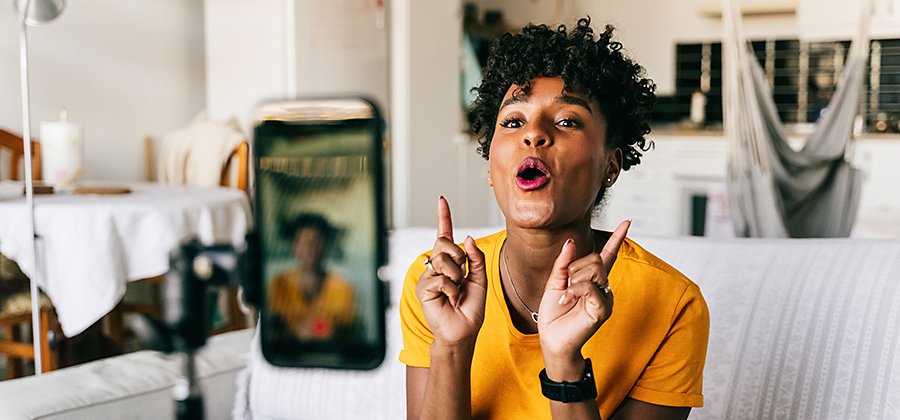
Short videos are a great way to reach an online audience.
Marketers, entrepreneurs, and entertainers alike produce short-form videos to capture the attention of their audiences. Ten- or 15-second videos on Instagram or TikTok that deliver quick life tips or funny music video clips can be used to entertain and promote your business. Longer IGTV or YouTube videos can be used for things like in-depth tutorials or workouts.
For most platforms other than YouTube, it’s best (or even necessary) to keep your video under 60 seconds. But you can pack a lot of info in a short amount of time with the help of captions, overlay text, and embedded images. And to connect with your audience in a small amount of time, a face on camera is best.

A face is worth a thousand words.
“If you read a blog, you kind of get a feeling of who a person is,” says content marketing consultant Sebastian Garcia. “But when you watch someone speak, they’re looking at the camera. You can see their mannerisms. You can hear the tone of their voice. That is incredibly powerful.”
Create short video clips that grab a viewer’s attention.
YouTube, TikTok, Instagram, Facebook, and even LinkedIn are crowded with popular videos, so it’s important to stand out. “On social media, there are three types of content that do well,” says finance content creator Tori Dunlap. “It’s educational, it’s aspirational, or it’s entertaining. These are your magic three. And if you can do all three, amazing.”
To grow a brand, focus on content that would be valuable and of interest for your user. “You don’t have to always say, ‘Buy my product,’ in order for people to be curious enough to buy your product,” says Garcia. “Find something related to your industry that people would find interesting enough to share with their friends. That’s the number one thing.”
Start with a hook.
With only a few seconds to capture the attention of your viewer, it’s important to be engaging right from the start. “I follow a simple formula. It’s hook, story, offer or CTA,” says Garcia. “The hook is probably the most important part in any piece of content, because you use it to grab someone’s attention.”
Your hook should occur within the first three to five seconds of your video. Visually interesting titles or treatments can help. So can a reference to the viewer specifically, such as the word “you,” or a reference to a specific audience, such as “college students.” “Then they’re more likely to stick around, because you’ve made it about them,” says Dunlap.
Be clear about the story.
It doesn’t matter if the central theme of your video is a 10-minute ab workout or 15 seconds of tax prep tips; it’s important to remain focused. “You have to have one clear takeaway,” says Garcia. “If you don’t have a clear takeaway, your audience will be lost.”
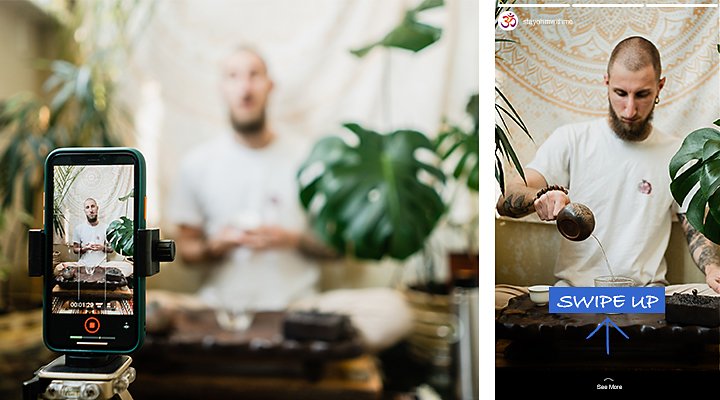
End with a call to action.
At the end of the video, tell your viewers what you want them to do. “The call to action can be anything from ‘Click the link’ to ‘Share this with someone you know’ or ‘Give me your two cents on what I just spoke about,’” says Garcia. “It could also be as simple as, ‘Follow me for more marketing tips.’”
Make it personal.
If you show your face in your content, that can drive engagement. You or your teammates’ unique content is more relatable than stock videos without a human element. “And personal brands have a huge advantage over corporate brands,” says Garcia. “The reason behind that is that you as a person have more ways to connect with your audience.”
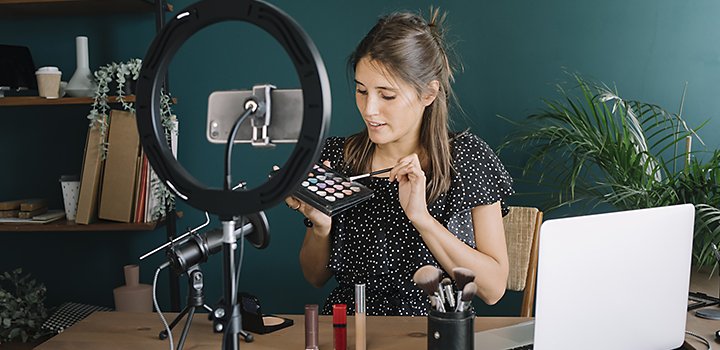
Plan out your short video creations before you shoot.
Do your research.
If it’s your first time on a platform, watch and get to know the trends for a few weeks or months. “I was on TikTok for six months as a user before I ever published a video for my business,” says Dunlap. “So I started to understand what worked well, what didn’t, and what sort of things people were talking about.”
Brainstorm on topics.
The people you are connected to on social media can help you come up with ideas for your videos. “I get a lot of ideas from my community, questions that people have asked,” says Dunlap. “I also get video ideas from repurposing my old content or talking about something I may have talked about before but in a new way.”
Batch it out.
While content created specifically for the platform it will be posted on is the most engaging, it is possible to film content in a way where it can be customized to fit different platforms. “I come from a social media background,” says Dunlap. “And I learned the power of batching your content. I will record 5 or 10 videos at one time.”
Take advantage of new features.
If a platform releases a new feature, jump on it early. Instagram Reels were introduced in 2019 and the platform’s algorithm still rewards users who post Reels. “People can have only 1,000 followers but get 5,000 impressions on one Reels video, simply because Instagram pushes that feature,” says Garcia.
Make a little go a long way.
To pack a lot of information into a small amount of time, use all of your resources. Add graphics and text overlays, and embed images into your clip. But be sure to keep it all clear and legible for viewers who may watch on a smaller mobile app screen.
You can include additional information in the captions of your posts, especially on Instagram, Facebook, YouTube, and LinkedIn. And if you need to, you can build your video out into a series so you can cover bigger topics in multiple parts.
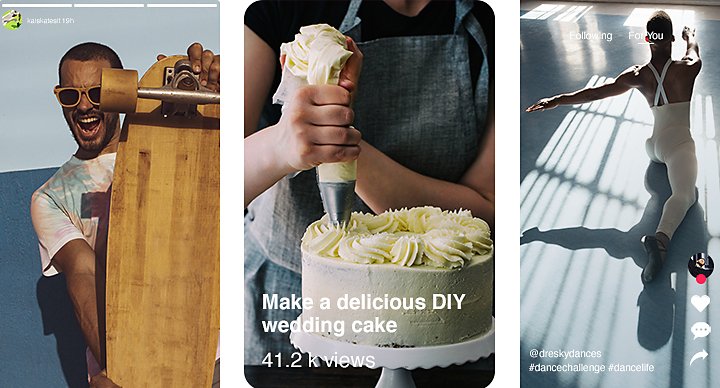
Customize your content for each platform.
You will need to modify your content for different platforms. The audience on LinkedIn is very different from the audience on TikTok, and so on. Each audience will expect a different kind of video. Keep in mind your caption restrictions as well. For example, Instagram captions can be incredibly detailed in comparison to the tiny caption of a TikTok post.
“If you go on YouTube, you expect 30-minute videos. But if you get on Instagram and there’s a 30-minute IGTV video, you are most likely not going to be interested in that,” says Garcia. “Because when people go on Instagram, they want 30 seconds or less. And the same thing goes with TikTok.”
“I try to reuse as much as I can. But I have IGTV videos that are 15 minutes long that I can't publish to TikTok unless I do some significant editing. So that is something I think through when I shoot content,” says Dunlap. “I ask myself, ‘Where’s this going to go? What are my restrictions? And who is my audience?’ Instagram audiences skew more millennial. And TikTok is younger millennial into Gen Z.”
To keep your content appropriate for its platform, become familiar with the functionality of one video site at a time. “Focus on building one platform,” says Garcia. “And once you feel really, really comfortable with it, you can move on to the next.”
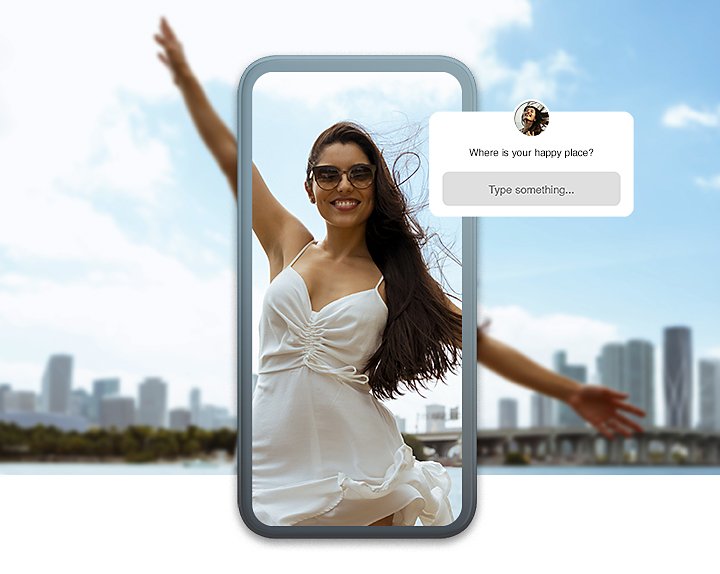
Cater to your audience.
Always keep your finger on the pulse of what resonates with your audience and what’s going on in your industry. “The best way to figure out if your content will perform well is to put yourself in the user’s shoes and think, ‘Okay, would I connect with this?’” says Dunlap.
Consistent content and interaction with your audience will help you get to know your community. And your community can help fuel your ideas for new content. Run a poll on Instagram or Twitter for exact answers to your questions, or simply keep tabs on your comments sections.
“I try to approach social media as, ‘How can I give you value?’ And often that is with answers to questions and explanations of topics that people are confused about,” says Dunlap. “And they'll tell me in the comments if they wanted a deeper explanation.”
Get started with simple short video edits.
Connection is key.
“Something that a lot of my clients struggle with is feeling like they need the best camera, the best microphone, the best tools,” says Garcia. “But in reality, what people really resonate with is that connection. So as long as you have an iPhone and natural lighting, you can make a really cool video that could even go viral.”
Make nuanced edits with Adobe Premiere Pro.
In some instances you can edit, and even shoot, your social media videos right within the platform. However, with Premiere Pro, you can make precise edits to your videos and prepare your footage for different platforms, including adjustments to aspect ratio, cuts and transitions, titles and graphics, visual effects, audio edits, and more.
Try a tutorial or two.
Learn basic video editing skills in Premiere Pro to take your videos to the next level.
Pick up your camera or your phone and see how you can connect with audiences. “Batch your content and just get started,” says Dunlap. “So many people want to wait until it’s perfect, and it’s never going to be perfect.”
Contributor
Do more with Adobe Premiere Pro.
Make visually stunning videos virtually anywhere — for film, TV, and web.
You might also be interested in…
Create YouTube intros that make an entrance.
Grab attention and build your digital brand with a professional intro for your YouTube videos.
Educate and inform with explainer videos.
Find out what goes into a good explainer video and how to effectively educate your audience.
Learn how to make a marketing or product video that helps you increase conversion rates.
Share your smarts with educational videos.
Learn how to make educational videos to help beginners tackle new skills.
Get Adobe Premiere Pro
Create flawless productions with the industry-leading video editing software.
7 days free, then ₱1,295.00/mo.



